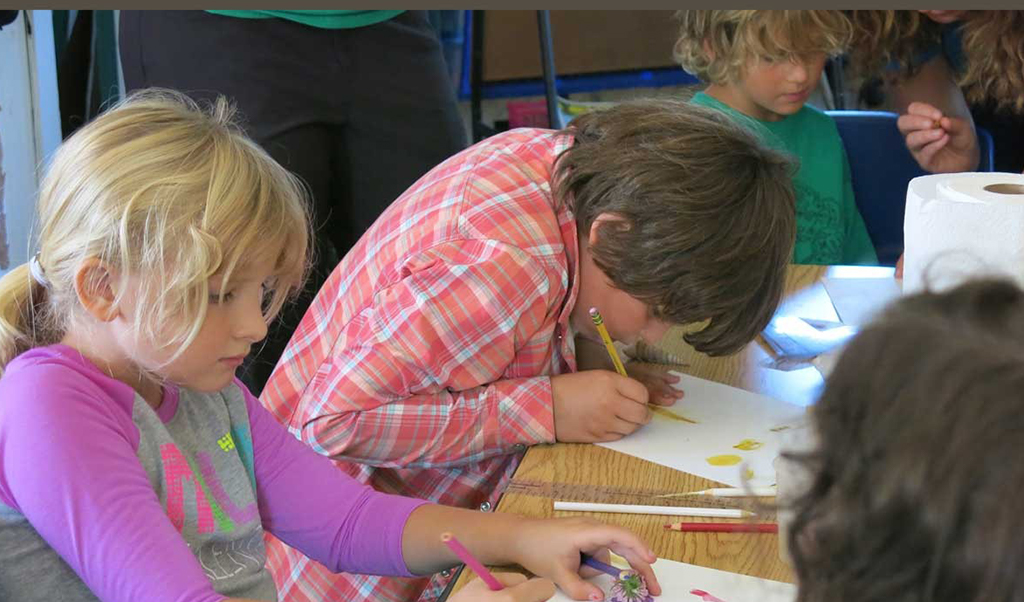Most years, the Labor Day weekend marks the start of the school year. Teachers begin weeks earlier, preparing their classrooms, refreshing lesson plans, and creating an organized, welcoming space for their students.
This year is different.
Administrators and teachers started preparing months before the planned start of school. The work included:
- Rural Aspirations Project’s collaborative Community Learning for ME website
- the Department of Education’s MOOSE platform of asynchronous learning modules
- adapting individual teachers’ curriculum for a hybrid remote and in-person model that could change to fully one or the other at a moment’s notice
- implementing new safety equipment
- calling each other up to talk through creative solutions.
In short, teachers were in full crisis preparedness mode all summer.
Their only certainty was that the start of this school year needed to look a lot different than last year. As one teacher said, “This school year feels impossible, but here we go anyway.”
Schools have changed their schedules, set up outdoor learning spaces, created one-way flow or limited access areas, and adapted to make sure teachers, students, and staff were as safe as they could be while resuming in person learning.
Many teachers are relieved to be back in the classroom with their students, at least for some time, even if that relief also comes with risk. For some immune-compromised teachers, in person instruction is impossible.
One teacher adapted her entire curriculum to be able to deliver instruction and interact with students virtually while she waited for approval to teach remotely, which didn’t come until Sept. 2, just days before school was scheduled to start. For her, the plans felt last minute; but the delay came as school boards waited for more guidance from the Department of Education and the Center for Disease Control, superintendents waited for guidance from school boards, and teachers waited for guidance from the administration.
Parents and students were often the last to know anything as school plans were adapted and then revised as state guidelines shifted and COVID numbers changed.
Many teachers wished they had been given support to build solid remote learning strategies so when school transitions back to remote learning (and for many teachers it is a question of when, not if), they could make the transition smoothly and minimize disruption for students.
One school board chairman admitted that the planning process for reopening has been messy, with the board often receiving information at the same time as the parents, making it hard to provide concrete answers. But, he said, planning for what school would look like has brought conversations about equity to the surface, forcing communities to confront inequalities and start seeking solutions.
For some teachers, the pandemic is providing a real-time lesson in flexibility and resilience. For others, the ability to get outside and do project based learning is a real benefit, and they hope that as teachers and administration less familiar with these pedagogies see the educational opportunities in them, they will become an integral part of education, even after the pandemic is over.
Other teachers note they are getting new opportunities to collaborate with colleagues from other schools and with other organizations, expanding the resources they can provide to students. For others, though, having decisions made at the local level often meant the release of information was slow or chaotic; it also allowed each school to create a plan for how best to open that met the needs of their families.
The transition to remote learning in the spring was heartbreaking for teachers who knew student needs couldn’t be met with a sudden and unplanned shift online. Now, teachers have spent time thinking of what worked and applying it. Professor Cat Biddle and her team at the University of Maine gathered many of the innovative responses of Maine schools into a report, “Beyond Crisis Schooling,” so teachers could learn from each other and build on strategies that worked.
As schools set an example for safely reopening, they are the center of intense scrutiny, worry, and hope as never before. Maine has so far managed the crisis so teachers can start out in their classrooms with their students in a safe version of nearly normal. As one principal said, “Our schools are in a much better position to deal with the educational challenges of COVID than most of the schools in the country.”
The first few weeks in the classroom are devoted to learning how to navigate new ways for students and teachers to be together safely. Beyond the classroom, there is a greater sense that parents, families, teachers, school board members, and whole communities are in this together.
Kate Tagai is a senior community development officer with the Island Institute, publisher of The Working Waterfront. She works on education and leadership.






